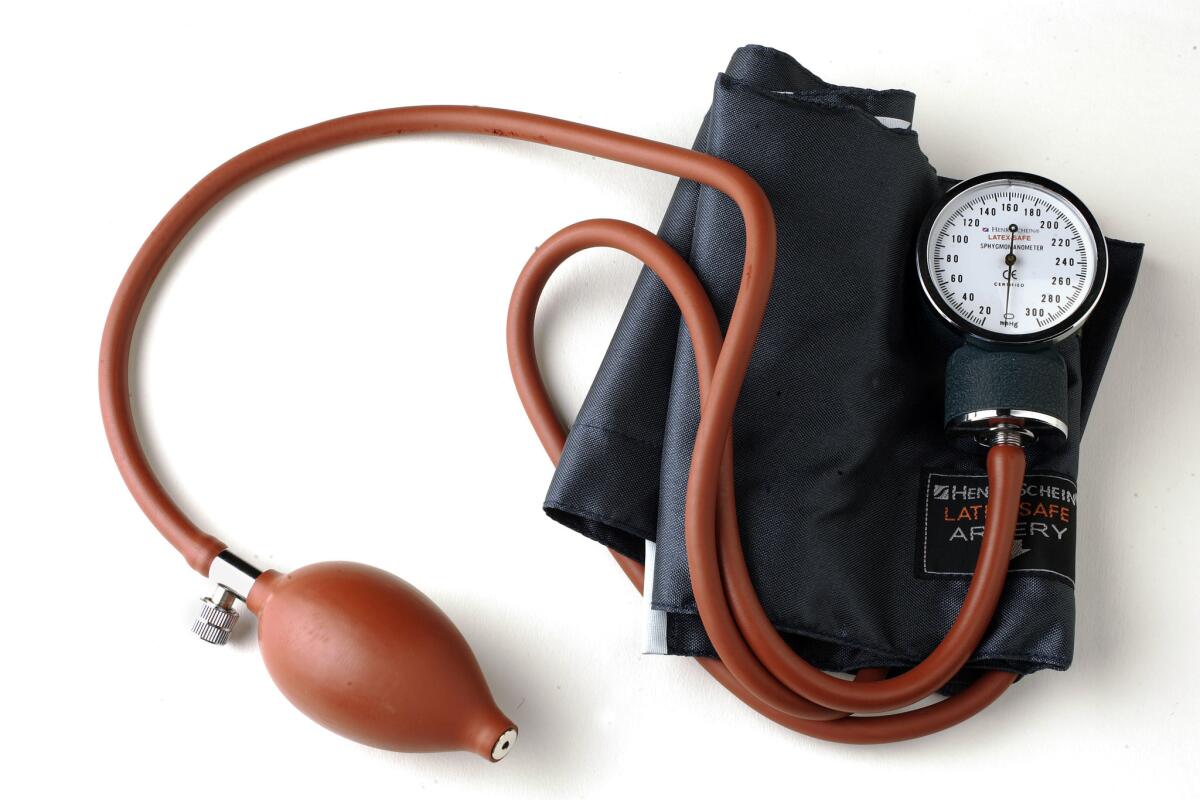Elevated blood pressure increasing among children

- Share via
The risk of elevated blood pressure among children and teens has risen 27% over a 13-year period, and is probably caused by over-consumption of salt and rising obesity, according to a new study.
In a paper published Monday in Hypertension, a journal of the American Heart Assn., researchers examined health and nutrition data for more than 11,600 children ages 8 to 17.
Study authors concluded that changes in eating habits over the last two decades, dependence on processed foods and excessive salt intake were putting more U.S. children at future risk of stroke, heart disease and kidney failure.
“There has been an epidemic of obesity in the past 20 years among children and adolescents,” wrote lead author Bernard Rosner, a professor of biostatistics at Harvard Medical School, and colleagues.
“As with adults, the average dietary sodium intake of children exceeds nutritional needs, is well above recommended levels, and has been progressively increasing,” researchers said.
Normal blood pressure for adults age 20 and over is considered to be less than 120/80 mm Hg, according to the Heart Association. For children and teens however, normal blood pressure varies according to sex, height and weight.
Roughly 16% of the children studied had blood pressure over recommended levels. Researchers classified them as having “elevated” blood pressure, because an official diagnosis of hypertension requires three high readings in a row.
Authors drew their conclusions from two sets of health and nutrition data -- one from 1988 to 1994 and a second set from 1999 to 2008. They found “significant” increases in weight and body mass index for boys and girls.
In comparing the two data sets, researchers found that the percentage of overweight boys rose from 27% to 35%, while the percentage of overweight girls rose from 25% to 33%.
“There were also large increases in waist circumference for boys and especially for girls,” authors wrote.
Children whose body mass or waistline measurements were in the top 25% for their age group were about twice as likely to have elevated blood pressure as children with measurements in the bottom 25%. Also, children with the greatest sodium intake were 36% more likely than those with the lowest intake to have elevated blood pressure.
While the relationship between high salt intake and high blood pressure in adults is well established, prior studies involving children have not demonstrated as clear a connection.
Authors of Monday’s study said their findings demonstrated an association between excessive salt intake among children and elevated blood pressure. It provided support to calls for a national reduction in salt intake, authors wrote.
More than 80% of the children studied reported eating over 2,300 mg (the daily recommended maximum) of salt. However, the percentage of children who consumed 3,450 mg or more each day actually declined from 40% of children to 30% of children.
“It seems there’s been a little bit of listening to dietary recommendations, but not a lot,” Rosner said in a prepared statement.
Return to Science Now blog
Follow me on Twitter @montemorin







